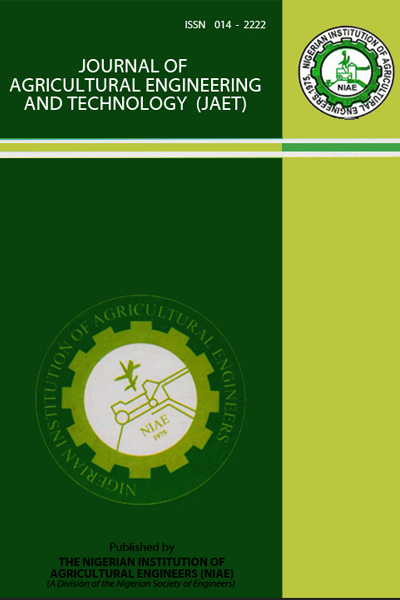WATER MANAGEMENT OF TOMATO CROP ROOT ZONE USING AQUACROP
Keywords:
Aquacrop, Field capacity, Permanent wilting point, Root zone, Soil profileAbstract
Water content at the root zone remains the major source of water to the plants which can be determined using various methods such as oven-dry or gravimetric; neutron moisture meter (NMM); electromagnetic sensors(capacitance sensors); conventional time domain
reflectometry; tensiometers and other several new technologies which include FAO aquacrop. The objective of this paper is to study the response of crop growth to water contents at root zone and soil profile with a view to eliminating crop failure due to water stress. The research location was at Epe in Lagos state, Nigeria, and climatic data required include rainfall (mm), radiation (MJ/M2), maximum and minimum temperature (oC), wind speed (m/sec), mean relative humidity (%) and Carbon Oxide concentration from 1982 to 2018 daily obtained from the archive of National Aeronautics and Space Administration. Aquacrop used was of version 6.1 FAO and crop chosen was tomato and simulation was run from 9th November 2017 to 26th February 2018 under drip irrigation. The results show that maximum water contents in entire soil profile, effective root zone, saturation, field capacity, leaf expansion, stomatal closure, canopy senescence, and permanent wilting point of loamy sand were 330.3, 300.0, 500, 300, 264.8, 195.9, 156.8 and 100 mm respectively. Achieving effective irrigation water management entails a cursory look at water contents in effective root zone since it is only major source of water to plants. Hence, the study contributes among others to the body of knowledge by aiding better understanding of plant- soil- water relationship and providing mitigation information against climate induced drought.


